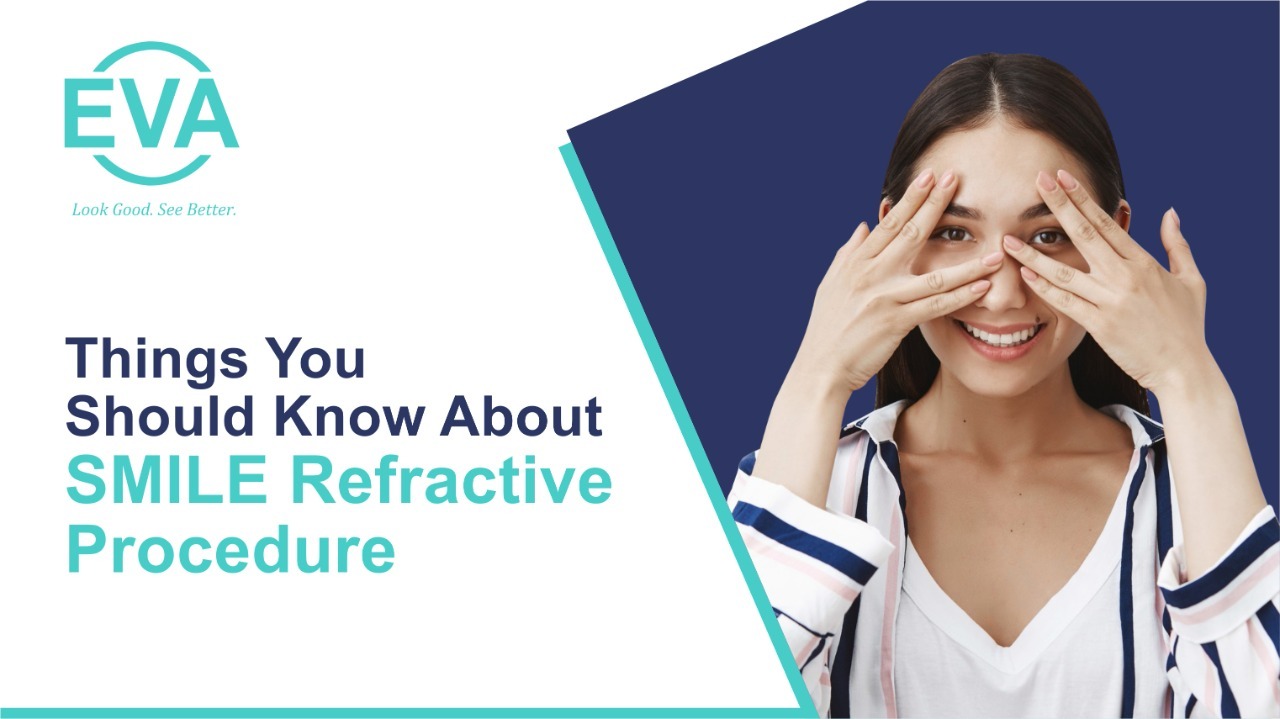Things You Should Know About SMILE Refractive Procedure

We all know how glasses have become a necessity in today's world where we are constantly surrounded by devices that affect our sight. When we buy glasses, select frames, their sizes and even choose a shade of colour that we are sure would suit us, it turns into a chore that we struggle to keep up with. In our hectic lives, we want an affordable and hassle-free solution that provides us with a good vision in the long run. One such solution is the SMILE Refractive Procedure. Standing for Small Incision Lenticule Extraction, SMILE is a one-step laser treatment, painless, reliable, flapless and a less complicated process when compared to other ways used to treat myopia and astigmatism. Keep reading to find out more about relex smile surgery.
Preparations Before SMILE Refractive Procedure
The latest technology has made it possible for us to treat up to -10.00 diopters (D) of nearsightedness and not more than -5.0 D of astigmatism. It is important to ensure that you fall under this specific criteria to be eligible for the surgery. Your prescription for your eyewear must be stable for at least 12 months. After SMILE, you may need your glasses only while reading or driving at night. A proper examination of your eyes from a certified ophthalmologist is mandatory.
Factors to keep in mind before SMILE :
1. Check whether your cornea is healthy or not - A thin cornea isn't eligible for the procedure. After making sure that you have a healthy cornea, tests like measuring and mapping the surface of the cornea are done in order to program the computer-based laser used during surgery.
2. Ensure you don't have inadequate corneal thickness, Keratoconus, other corneal diseases, pregnancy or lactation. There shouldn't be epithelial basement membrane dystrophy and no external eye disease like Blepharitis.
3. Those who wear contact lenses will need to discontinue their lenses for a few days before the examination and surgery.
4. To heal or completely restore correctable ocular disorders. The reason behind this is, that if you're having surgery while having a disease, it'll eventually both worsen.
During ReLex SMILE Eye Surgery -
- The femtosecond laser is programmed with the specific measurements for your cornea.
- It’s totally normal to be anxious before the surgery. There's nothing to worry about, your eye will be numbed with eye drops.
- An eyelid holder will be placed by your surgeon on your eye to prevent it from blinking.
- Keep away from any woollen clothing or items similar to it. The reason behind this is, as it may give rise to lint which can land in your eye and cause irritation, leading to being uncomfortable or itchiness resulting in a risk of infection.
After SMILE Surgery
There are some postoperative precautions to be taken for efficient recovery, although the success rate of this surgery is quite high.
Things that are to be taken care of:
- It is not recommended to drive any vehicle immediately after surgery, though your vision will improve afterwards.
- Proper rest is advised. Stay away from using smartphones or prolonged television viewing.
- Eye drops will be provided for you as prescribed by your surgeon. That involves the following medication:
- An Antibiotic eye drop for 15 days or more.
- An Anti-inflammatory eye drop for 15 days or more
- A Tear Substitute based eye drop for about 2 months
- The vision may be blurry right after SMILE surgery in some cases, but there is nothing to worry about, your eyesight will gradually improve as you heal.
- Rigorous exercises and swimming are strictly forbidden. Normal tasks or activities can be carried on after a day or two.
Complications Of SMILE :
- The SMILE Refractive Procedure may leave your vision overcorrected or undercorrected. However, these defects can be cleared by additional surgery or the use of glasses or contact lenses.
- The possibility of dryness of the eye and dehydration are less in this surgery as compared to other laser surgeries.
- Inflammation or infection of the treated area can be seen, but these usually go away naturally or with minimal treatment.
- Complaints of seeing glare and halos around lights, particularly at night, can be claimed by some patients.
Side Effects And Risks
Potential side effects involve :
- Glare
- Halos around lights
- Dry eye
- Debris at the site of tissue removal
- Inflammation in tissues
- Infection
- Need for retreatment with a more intensive procedure like photorefractive keratectomy (PRK).
Who Should Have a SMILE Refractive Procedure:
- One who is at least 22 years old.
- Someone whose vision is stable. Your eye prescription should not have changed in the past year.
- One whose eyes and corneas should be healthy.
- Your myopia should be between −1 and −10.
- Your astigmatism should be less than 3 diopters.
Who Shouldn't Have a SMILE Refractive Procedure:
People with
- Thin corneas
- Irregular astigmatism
- Scars on the cornea
- Progressive ectasia (thinning of the cornea)
- Changing (unstable) refraction
- Cataracts in one or both eyes
- Glaucoma
- Diabetes, uncontrolled
- Earlier eye surgery or disease
As we have mentioned all the requirements, preparations, process and the possible complications for having a SMILE Refractive Procedure , you must have a clearer picture of what you're going to experience and gain all along. If you're planning to make an appointment, don't forget to contact us!

